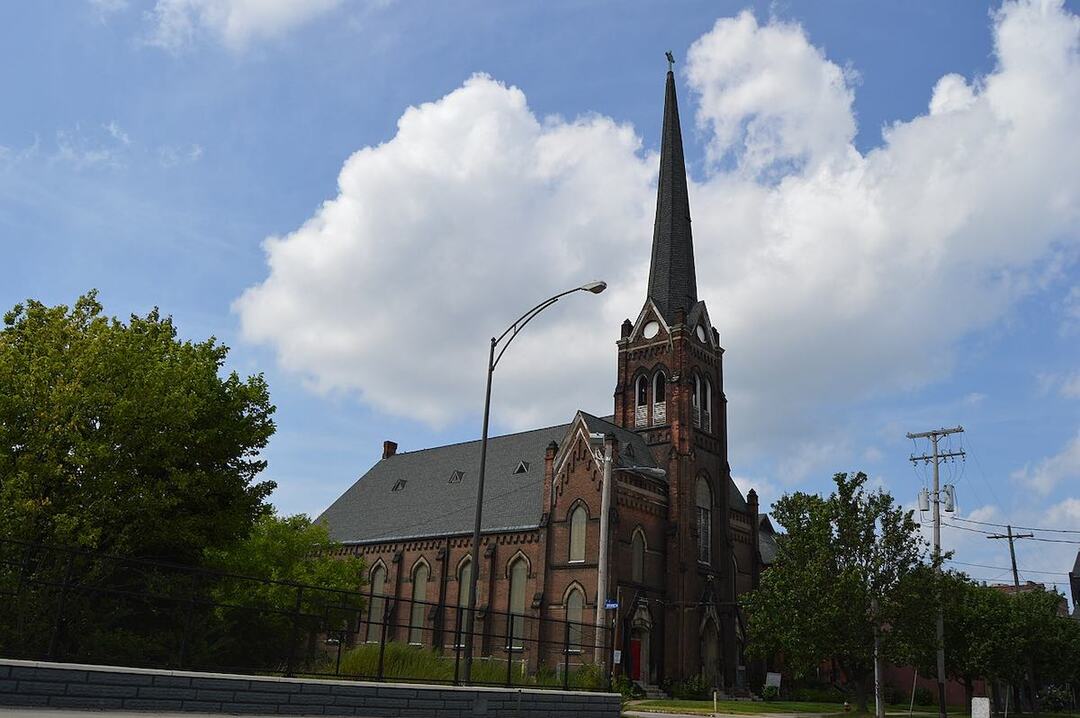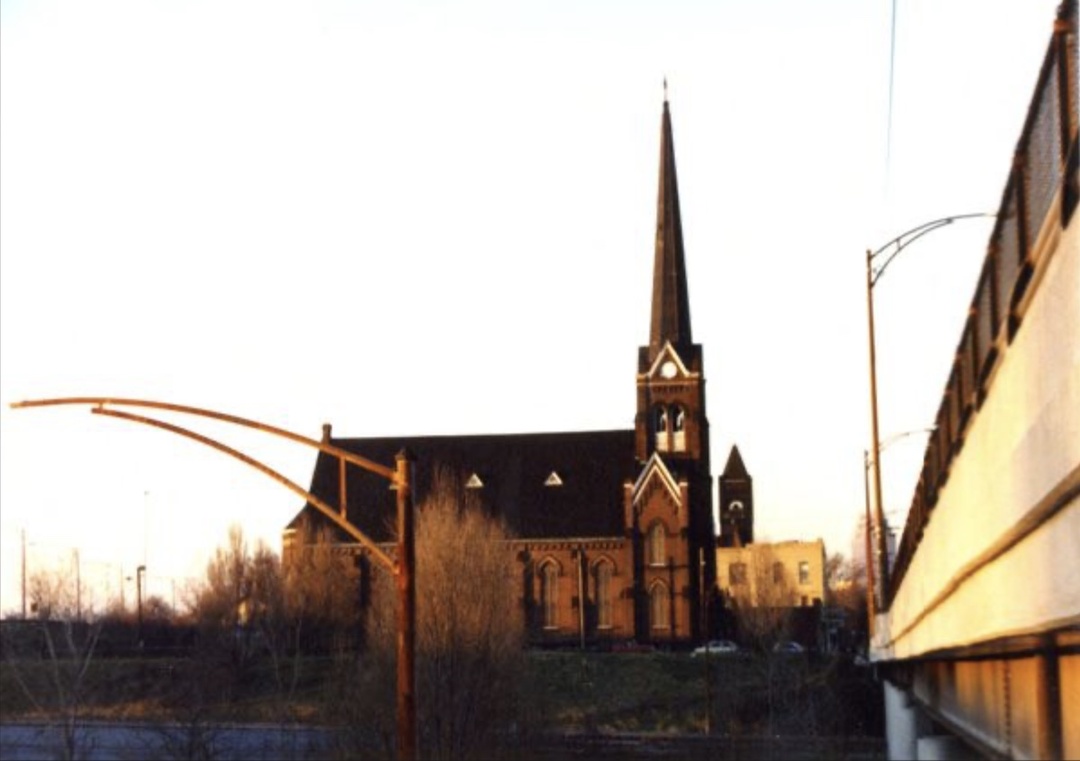
German families began moving into Tremont during the 1860s—one of the first ethnic groups (along with the Irish) to settle in Tremont. Some Germans relocated from older communities on the city's near west side (particularly Ohio City). Others came directly from overseas—driven out by political oppression, religious persecution, economic depression and crop failures. Germans remained the largest group arriving in Cleveland on an annual basis until the mid-1890s. One German congregation—Zion Evangelical Lutheran Church—is credited with introducing the Christmas tree to Cleveland.
Zion United Church of Christ (UCC) traces its history to 1867, when 40 German families living in Tremont (then known as Lincoln Heights) received permission from the pastor of Ohio City's West Side Church to form a new neighborhood congregation. That same year, The United German Evangelical Protestant Church (in 1927, it dropped "German" from its name and added "Zion") dedicated a new structure at College Avenue and Tremont Street. In 1872, a new facility—a frame building seating 600 people—was erected at Branch and Jennings Avenues. Oil lamps adorned the sidewalls and a small hand pump organ was installed in the balcony. In 1885, the church’s current home was completed on the same site. Services were held exclusively in German until 1916 when one weekly English service was added.
The new church included seating for more than 1,500 worshippers. Pointed arches over window and door openings are Gothic inspired, as are the open belfry and an octagonal spire atop the squared-off bell tower. The church’s 175-foot steeple is visible for miles—a holy beacon for a neighborhood steeped in ethnic and religious history.
Zion UCC is not the only church in Tremont founded by German immigrants. Emmanuel Evangelical United Brethren Church built a wooden facility in 1865 and replaced it with a Gothic-themed facility in 1908. That building (2536 West 14th Street) is now Iglesia Pentecostal El Calvario Church. Germans also built Immanuel Evangelical Lutheran Church (2928 Scranton Road) in 1880 and St. Michael the Archangel (3114 Scranton Road) in 1881.
Zion UCC celebrated its 90th anniversary on May 15, 1957, with almost 600 people attending a special service and a capacity crowd of 400 participating in the anniversary dinner. This may well have been Zion’s apotheosis as a house of worship. The 1970s saw an increase in neighborhood crime and vandalism. Residents fled to the suburbs. Church attendance dwindled. The parsonage was torn down and a parking lot was created. In December, 2000, a windstorm severely damaged the steeple and blew tiles off the roof. Insurance funds covered only repairs to the roof and temporarily patches for the steeple.
By the 2010s, the congregation numbered only a few dozen people. The high cost of maintaining its large, historic building led the congregation to consider selling it for redevelopment. After a plan for turning the sanctuary into a rock-climbing gym fell through, Zion sold its building to a developer for conversion into the San Sofia Apartments, which opened in 2020. Although it sold the historic pews for scrap and shipped the church bells to Vietnam for reuse in a new church there, the Zion redevelopment conserved some of the property's historic character as possible in the absence of historic preservation tax credits. Unlike most conversions, which tend to follow the move or dissolution of a struggling congregation, Zion continues to hold services in its adjacent former school building, which it leases from the new owners.
Images





